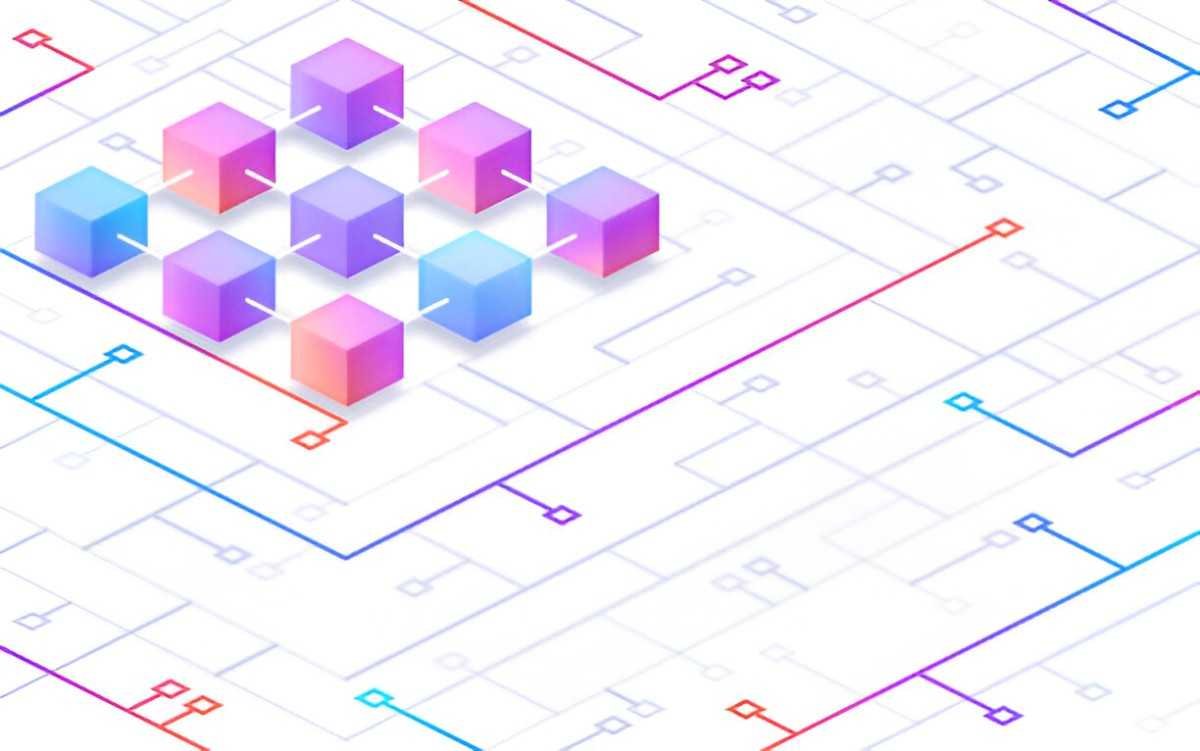As the world becomes increasingly interconnected, the need for efficient and transparent supply chain management has never been more apparent. Companies across industries are searching for ways to ensure that their products meet high-quality standards while maintaining efficiency. This is where a blockchain-based quality management framework comes into play. Blockchain technology offers an innovative solution that not only enhances the transparency of supply chains but also ensures the integrity and quality of the products that flow through them. In this article, I’ll explore how blockchain can be leveraged to improve supply chain quality management, offering a practical guide for businesses looking to adopt this emerging technology.
Table of Contents
Understanding Supply Chain Quality Management
Supply chain quality management (SCQM) is the process by which businesses ensure that their products meet or exceed predefined standards of quality throughout the supply chain. From raw material procurement to final delivery to consumers, SCQM involves managing various elements, including supplier selection, product testing, audits, and process monitoring. The goal is to ensure that every product that reaches the consumer is of high quality and has been produced in a manner that adheres to regulations and standards.
However, traditional methods of quality management in supply chains face significant challenges. These challenges often include a lack of transparency, inefficiency in data sharing, and the potential for errors or fraud in product tracking. This is where blockchain technology can provide a major advantage.
What Is Blockchain and How Can It Improve Supply Chain Quality Management?
Blockchain is a decentralized, distributed ledger technology that securely records transactions across multiple computers. Once data is recorded on a blockchain, it cannot be altered, providing a transparent and immutable record of every transaction. This feature of blockchain makes it an ideal solution for supply chain management, where transparency and data integrity are critical.
In the context of supply chain quality management, blockchain allows for real-time tracking of products and materials as they move through the supply chain. By using blockchain, businesses can ensure that all stakeholders—manufacturers, suppliers, distributors, and consumers—have access to accurate, unaltered data at every stage of the process.
Key Benefits of Using Blockchain in Supply Chain Quality Management
- Transparency: Blockchain creates a transparent system where all participants in the supply chain can access real-time data on product quality. This transparency helps build trust between all parties and ensures that the final product is free of defects or fraudulent modifications.
- Traceability: With blockchain, every product is traceable from its origin to its final destination. This traceability is crucial for quality control, as it allows businesses to pinpoint where any issues may arise in the production process.
- Improved Efficiency: Blockchain automates many manual processes, such as paperwork and record-keeping. By digitizing these tasks, it reduces human error and speeds up the overall supply chain process.
- Security: The decentralized nature of blockchain ensures that no single entity can control or alter the data. This high level of security protects against fraud and ensures that quality data remains unchanged throughout the supply chain.
- Cost Reduction: By reducing inefficiencies and minimizing the risk of fraud, blockchain can lower costs associated with quality management. For example, fewer product recalls and fewer compliance violations can lead to significant savings.
Building a Blockchain-Based Quality Management Framework
A blockchain-based quality management framework in supply chains consists of several key components. Below, I will outline how this framework can be structured and explain the steps involved in implementing it.
1. Identification of Stakeholders and Roles
The first step in building a blockchain-based quality management framework is identifying all the stakeholders involved in the supply chain. This includes suppliers, manufacturers, logistics providers, retailers, and customers. Each stakeholder has a role to play in ensuring product quality. Blockchain can streamline communication between these stakeholders, ensuring that everyone is on the same page.
2. Product Lifecycle Documentation
One of the core principles of blockchain is the creation of an immutable record. For quality management, this means documenting every step of the product lifecycle, from raw material acquisition to final delivery. For example, a company might track the quality of a batch of ingredients as they pass through various stages: production, testing, packaging, and distribution. By recording each of these stages on a blockchain, companies can easily trace back any issues to their source.
3. Integration with IoT Devices
In some supply chains, especially in industries like food, pharmaceuticals, or electronics, quality control involves monitoring environmental factors such as temperature, humidity, and storage conditions. By integrating blockchain with Internet of Things (IoT) devices, companies can automatically record this data on the blockchain. If an IoT sensor detects that a product has been stored outside its ideal conditions, an alert can be triggered, and the relevant parties can be notified in real-time.
4. Smart Contracts for Automated Compliance
A key feature of blockchain is the ability to use smart contracts. These are self-executing contracts with the terms of the agreement directly written into code. Smart contracts can automatically verify that products meet specific quality standards and trigger actions when conditions are met. For example, a smart contract could automatically release payment to a supplier once a product batch has passed a quality inspection.
5. Quality Audits and Compliance
Blockchain can streamline quality audits and compliance checks. Instead of manually inspecting records, auditors can quickly access blockchain’s immutable logs to verify that all steps have been followed according to quality standards. This can significantly reduce audit times and increase the accuracy of compliance reporting.
Example: Blockchain for Quality Management in the Food Industry
Consider the food industry, where maintaining quality standards is critical for consumer safety. Blockchain can help businesses track the quality of products from farm to table. For example, a company that sells organic vegetables could use blockchain to verify that their produce was grown without pesticides, stored at the correct temperature, and delivered to the retailer in perfect condition.
By using blockchain, consumers can scan a QR code on the product packaging to view the entire history of the product. This creates trust, as consumers can see that the vegetables have been carefully monitored throughout the supply chain.
Let’s imagine a scenario where a batch of vegetables is found to be contaminated. Thanks to blockchain, the company can quickly trace the source of the contamination to a particular farm or distributor, preventing a large-scale recall and minimizing damage to the brand.
Calculations: Blockchain’s Impact on Efficiency and Costs
To better understand the benefits of blockchain, let’s look at an example. Suppose a company processes 100,000 orders annually and spends $100,000 on quality inspections and compliance audits. With blockchain, the company could reduce the time spent on paperwork and manual inspections by 50%. Let’s calculate the savings.
Current Cost of Quality Management:
- Total cost of quality inspections and audits: $100,000
- Time spent on manual processes: 50% (50,000 hours)
- Average labor cost per hour: $50
Savings with Blockchain:
- Time savings: 50,000 hours * 50% = 25,000 hours
- Cost savings: 25,000 hours * $50 = $1,250,000
So, by implementing blockchain, the company could save $1,250,000 annually. These savings come from reduced labor costs, fewer errors, and faster inspections, allowing resources to be better allocated elsewhere.
Comparison: Traditional Quality Management vs Blockchain-Based Quality Management
| Feature | Traditional Quality Management | Blockchain-Based Quality Management |
|---|---|---|
| Data Transparency | Limited visibility, data silos | Real-time, transparent data for all stakeholders |
| Data Integrity | Prone to human error and fraud | Immutable, tamper-proof records |
| Efficiency | Manual record-keeping, slow audits | Automated, faster processes |
| Cost | Higher due to inefficiencies | Lower due to reduced manual work and fraud prevention |
| Traceability | Limited, difficult to trace back issues | Easy to trace back to the source of any issue |
Conclusion
In conclusion, blockchain technology offers a powerful solution for improving supply chain quality management. By providing transparency, traceability, security, and efficiency, blockchain enhances the ability of businesses to ensure the quality of their products while reducing costs and inefficiencies. As supply chains become more complex and global, the need for reliable and scalable quality management systems will only grow. Blockchain provides a framework that meets this need, offering a new way for businesses to build trust with their customers and optimize their operations.
In my view, businesses that embrace blockchain-based quality management will gain a competitive advantage. Not only will they be able to improve product quality, but they will also foster stronger relationships with their suppliers, retailers, and customers. As the technology continues to evolve, I believe blockchain will become a standard in supply chain management, offering a path to greater transparency, efficiency, and quality assurance.





